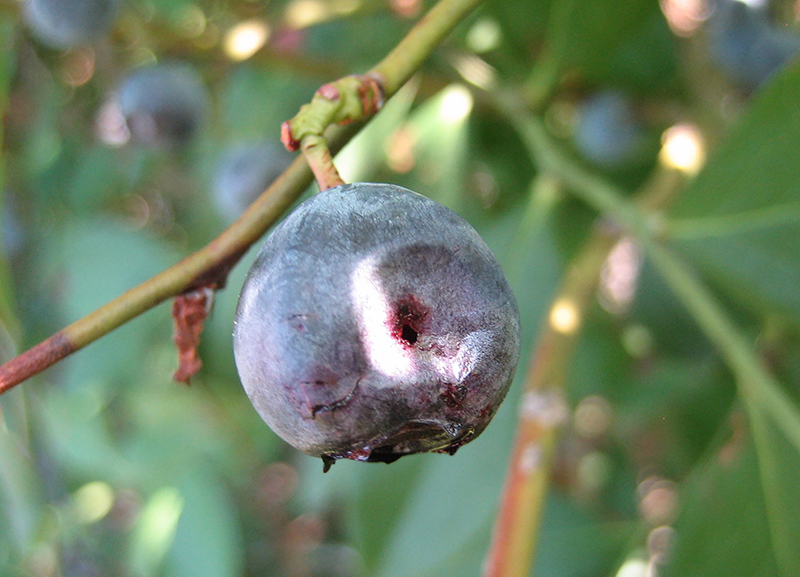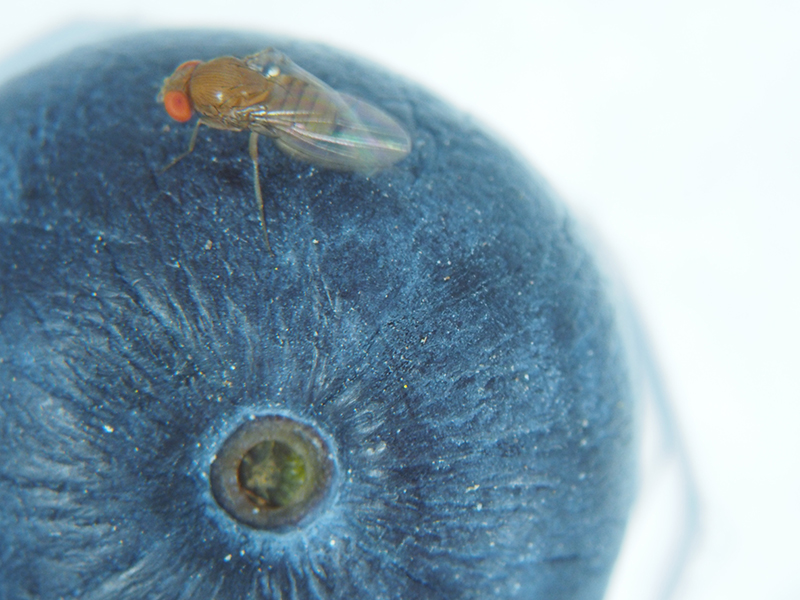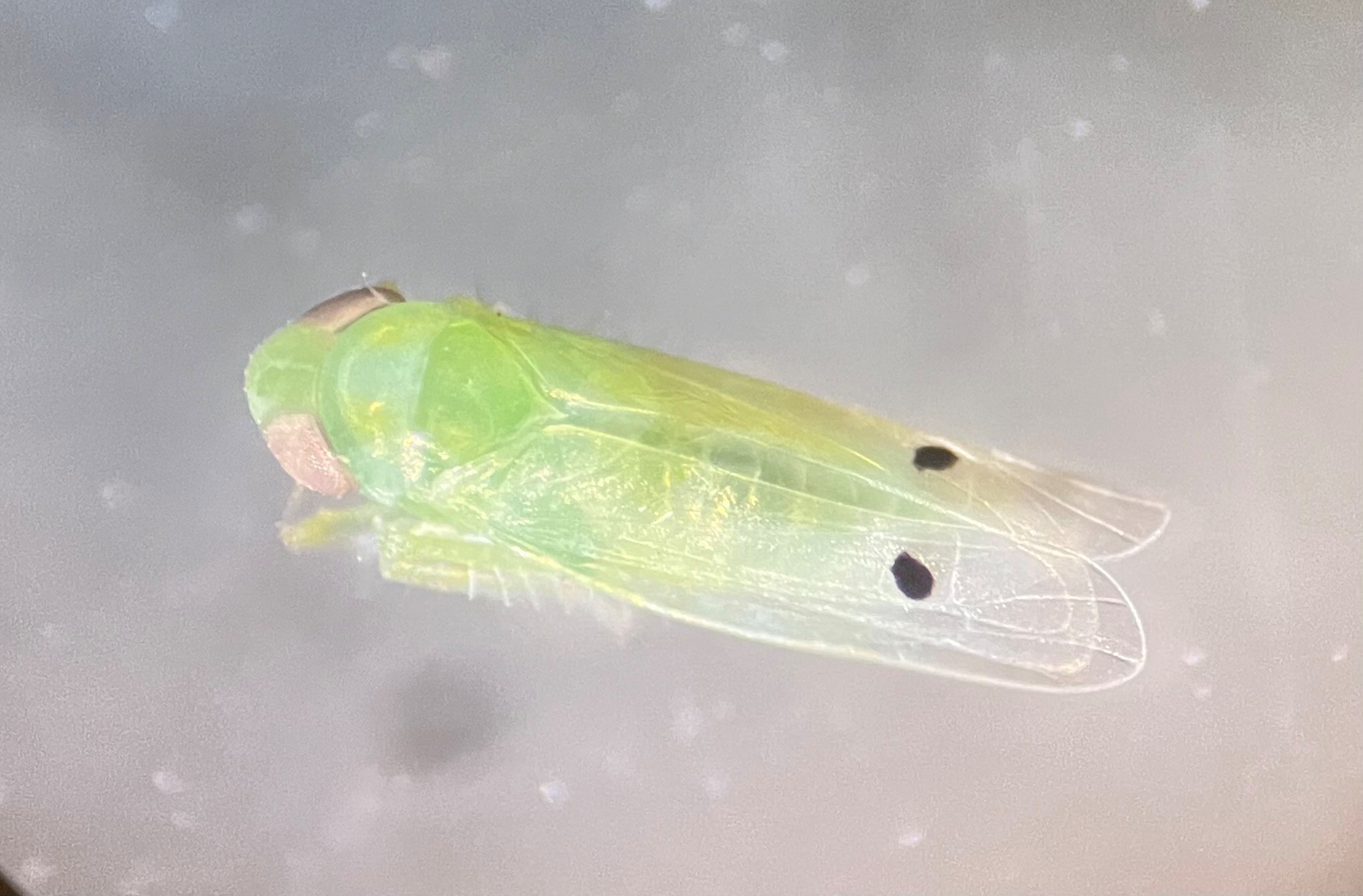University of Georgia entomologist Ashfaq Sial advises Georgia blueberry farmers to manage the spotted wing drosophila (SWD), the crop’s most destructive pest, by incorporating cultural practices into farming.
Practices likes heavy pruning, controlled burns of the wooded areas surrounding blueberry fields, and the use of weed mat as a ground cover are effective management tools. These practices ensure the success of SWD management programs implemented during harvest, the time when blueberries are most vulnerable to SWD infestations.
SWD can inflict costly damage on blueberry production, and these management techniques are required to fight this pest, according to Sial. SWD deposit eggs into ripe blueberries and leave the fruit unmarketable. Buyers will not accept blueberries with SWD damage.
SWD exist in all of Georgia’s blueberry-producing counties, all of which are concentrated in the southeastern part of the state. Research on the pest’s biology and ecology shows that SWD will persist, but UGA and UGA Cooperative Extension researchers have developed strategies to effectively control and protect fruit from SWD infestations, according to Sial.
“The maximum impact of SWD was seen in 2013, when more than 20 percent of the crop was lost and several farmers’ crops were rejected, which led to 100 percent crop loss,” Sial said. “As long as farmers are able to implement management programs in a timely manner, we can keep SWD’s impact to minimal levels.”
Since joining the UGA College of Agricultural and Environmental Sciences faculty in late 2013, Sial has invested a lot of time and resources, provided by farmers, the state government and federal government through grants, to increase awareness of SWD and develop management programs.
Blueberry orchards should be closely monitored for SWD through traps. Tall traps with a greater bait surface area attract more of the pests. Holes in the traps should be wide enough so that flies can enter, but narrow enough to keep the bait from quickly evaporating.
Growers should check the traps weekly from the time the fruit starts to ripen, or change color, through the end of harvest. Once SWD are detected in the traps, producers need to apply effective insecticides.
Another viable management option involves pruning in the fall, usually after harvest. Research sponsored by the U.S. Department of Agriculture National Institute of Food and Agriculture through the Organic Agriculture Research and Extension Initiative grant shows that heavy pruning opens up the canopy, which increases light penetration and temperature. This pruning creates a less-than-ideal environment for SWD and reduces the risk of infestation, Sial said.
“Now that farmers are aware of this problem and have the tools to identify this problem and implement effective management programs, crop loss due to spotted wing drosophila will continue to decrease with very few to no rejections at the packing lines,” Sial said.
While SWD remains the key pest that blueberry farmers must to be mindful of, Sial cautions producers to be wary of blueberry gall midges. These tiny flies feed inside young growing buds. Infestations can go unnoticed if a monitoring plan is not established.
“The reports of gall midge infestations have increased tremendously over the past few years, particularly since we have started to use broad-spectrum insecticides for SWD,” he said. “These insecticides can kill beneficial insects in the orchards that were keeping secondary pests, such as the gall midge, under control.”
Several years of insecticide use have significantly decreased populations of the natural enemies of blueberry pests. Consequently, blueberry growers must apply pesticides to control populations of pests, like gall midge, thrips, scales and whiteflies.
Sial is part of the UGA Blueberry Team. The team conducts research on blueberries and provides real-time advice to the state’s growers through its blog at blog.caes.uga.edu/blueberry/.
Those interested in learning how to make a trap for spotted wing drosophila can go to https://www.youtube.com/watch?v=hVOn5SHqKgI.





